What are the varieties and flavor characteristics of Latin American coffee beans? Latin American coffee bean price list 2020
Professional coffee knowledge exchange more coffee bean information please follow the coffee workshop (Wechat official account cafe_style)
Qianjie believes that all coffee fans have more or less drunk Latin American coffee. Today, Qianjie focuses on the coffee producing areas and characteristics of Latin America.
Latin America refers to the American region south of the United States and the continent between latitudes 32 °42'N and 56 °54'S.
So how did coffee get into Latin America? I'll tell you in front of the street!

According to Qianjie, in the 17th century, the cultivation and production of coffee was monopolized by Arabs, so it was valuable in Europe, and only the upper echelons of Europe could drink coffee. Until 1690, a Dutch captain sailed to Yemen, got some coffee seedlings, and successfully planted them in Dutch India (now Indonesia). In 1727, the wife of a diplomat in Dutch Guiana gave some coffee seeds to a Spaniard in Brazil. Brazil's climate was very suitable for coffee growth, and the Brazilian experimented with coffee and achieved good results. Since then, coffee has spread rapidly in Latin America, and coffee, which has fallen in price due to mass production, has become a daily drink for Europeans.
Coffee is widely grown in Latin America, and Brazil ranks first in coffee production in the world.
The flavor of Latin American coffee beans is famous for its sense of balance and mellow thickness. Qianjie believes that it is different from the Asian coffee producing areas (for example, Qianjie Yunnan small grain coffee); Latin American coffee beans usually show the flavor of cocoa and dark chocolate.
However, different treatment methods will also slightly affect the coffee flavor, but the main flavor is the same. Latin American coffee beans are generally treated by washing, processing and fermentation, but in Brazil, they are mostly treated in half-sun, and the beans are relatively large and complete.
Next, Qianjie will tell coffee fans about the coffee characteristics of different countries in Latin America.
First of all, the Latin American region consists of four parts, with a total of 33 countries and a number of unindependent regions. The four parts are Mexico, Central America, South America and the West Indies. Its terrain is complex, Mexico is basically a prairie, called the Mexican plateau. Central America is a mountainous region. Most of the West Indies are also mountainous. The Andes stand on the western Pacific coast of South America. To the east of the Andes, plains and plateaus alternate, from north to south Orinoco Plain, Guyana Plateau, Amazon Plain, Brazilian Plateau, La Plata Plain, Patagonia Plateau and so on. At the same time, the climate is very humid, it is the wettest continent in the world, so it is also very suitable for growing coffee.
The selection of Latin American coffee is generally done manually. The main basis for selection is according to the fullness of coffee particles, whether it is uniform, and then grade it. Generally speaking, coffee with full and uniform grains is easier to preserve.
Qianjie also believes that only the fullest and most evenly grained coffee beans can be roasted to represent the best and best coffee in the region. The main varieties of coffee grown in Latin America are Bourbon, Kaddura, Mondo Novo and Typica, as well as giant elephant beans.
Next, Qianjie has to talk about the most representative kinds of coffee in Latin America by country and region.
Guatemala:

Located in the isthmus of Central America, Guatemala has many volcanic mountains and plateaus. Because of its high altitude, Guatemala can produce high-quality very hard coffee beans. It is the ninth largest producer of coffee beans in the world. The main coffee producing areas in Guatemala are Antigua, Huehuetenango, Atitlan, Coban, Fraijanes, Acatenango and other seven major producing areas. When the coffee beans produced in Guatemala, which has seven major coffee producing areas, are all Arabica, they are all located in the highlands of the subtropical climate, with rich and stable rainfall and fertile volcanic ash soil. all parts of the country have natural environmental conditions that are very suitable for coffee cultivation.
The valley is surrounded by three volcanoes: Agua, Fuego and Acatenango. Volcanic ash from the eruption makes the soil of Antigua rich in minerals. Volcanic pumice can maintain humidity and overcome the lack of rainfall in Antigua; dense tree shade protects against occasional frosts. Therefore, the coffee cherry here is rich in wet aroma, good balance, high sweetness and delicate thickness.
The front street of Guatemala micro special south fruit
Country: Guatemala
Producing area: Vivette Nanguo
Altitude: 1500-2000m
Variety: bourbon, Kaddura, Kaduai
Treatment method: washing treatment method
Flavor: citrus berry nut tea
The tiny South Fruit region, located in the highlands of northwestern Guatemala, is famous for producing high-quality beans. Qianjie believes that the coffee in this area is fruity and sour and sweet.
According to the general knowledge of geography and meteorology, we all know that at a higher altitude, the slower the coffee grows, the more conducive to the accumulation of nutrients, but if the altitude is too high, coffee trees will also produce frost because the temperature is too low. I can't even survive.
However, according to Qianjie Coffee, it is known that even if the coffee cherry planted in the high altitude of nearly 2000m, it is not easy to appear frost phenomenon, but because of the high but not cold growth environment to create high-quality very hard beans. This is entirely due to the warm, dry air from the Mexican plains, which protects the coffee trees from frost. Qianjie believes that it is precisely the geographical conditions blessed by heaven that have created such a high-quality flavor.
Qianjie Guatemala Flower God
Country: Guatemala
Producing area: Antigua
Altitude: 1200-1600m
Variety: bourbon, Kaddura, Kaduai
Treatment: washing treatment
Flavor: floral, fruity, soft acid
The Antigua producing area itself is the most famous of the seven major producing areas in Guatemala, with high altitude, unique volcanic soil and shade planting, so the coffee beans in the Antigua region have a unique flavor.
According to Qianjie, Huasen is a brand bean owned by La minita, which is located in Antigua, Guatemala. It is a highland surrounded by active volcanoes and is 1850 meters above sea level. It is the most award-winning and most famous producing area in the country.
Antigua has little rainfall in summer and occasionally frosts because it is too cold in winter, which is actually not suitable for the growth of coffee trees, but fortunately it is located in the active volcanic zone, and the volcanic light stone after the volcano ejects falls into the soil after cooling, because these light stones have many fine pores. It is very easy to moisturize, coupled with a large number of shade trees planted in the manor, so that coffee trees will not be harmed by cold in winter. Qianjie believes that these factors to overcome adverse conditions, coupled with the great temperature difference between day and night, have created Antigua to form a unique micro-climate, which also makes the coffee beans here produce a light smoky flavor and strong fruit aroma.
two。 Brazil:

Brazil is the world's largest coffee producer and the world's second largest coffee consumer (the first is the United States). Although Brazil faces several times more natural disasters than other regions, Qianjie thinks it has enough acreage to make up for it.
Brazil has 21 states, 17 of which produce coffee, but four of them produce the largest, accounting for 98 per cent of Brazil's total output: Parana, SaoPaulo, MinasGerais and EspiritoSanto, with the southern state producing the most, accounting for 50 per cent of total production.
According to Qianjie, there are many large farms in Brazil that operate endless coffee plantations. They use machines to harvest and dry, and the efficiency of automation is very high. But too mechanized production makes them only focus on quantity rather than coffee quality; completely abandon flavor and disregard. As a result, many select coffee companies simply do not sell Brazilian beans so as not to demean themselves.
However, later, Brazil took great pains to improve the quality of coffee, constantly cultivating improved Arabica varieties and changing the coffee bean treatment method according to the dry and wet conditions of the climate to show the best regional flavor. So Qianjie thinks there is still a lot of high-quality coffee in Brazil.
There are mainly two kinds of topography in Brazil, one is the Brazilian plateau above 500 meters above sea level, and the other is the Brazilian plain below 200 meters above sea level. The main cultivated and well-known variety is bourbon (including yellow bourbon, red bourbon, Pingdou Shan du Shi).
The commonly used treatment methods in Brazil are sun, half-sun and water washing. Generally, water washing is used in areas with high humidity, and sun or half-sun is used in areas with low humidity.
Here are the current Brazilian coffee beans on Qianjie.
The Queen of Brazil on Qianjie
Country: Brazil
Producing area: Morgiana
Altitude: 1400-1950
Variety: yellow bourbon
Treatment: half-sun
Flavor: nuts, creamy peanuts, fermented fruit, sucrose
This coffee comes from FazendaRainha (Queen's Manor), which covers an area of 280mu and is located in Vale da Grama, an ancient volcanic valley in Brazil.
In 2011, the manor won the championship in the COE competition in Brazil. Fazenda Rainha is owned by the prestigious and respectable coffee family Carvalho Dias family. Since the first Brazilian COE Competition in 1999, Carvalho Dias's four major estates have won awards every year, winning more than 12 times in the past seven years, and even arranged for the champion, 9th, 11th and so on in 2004, many large and small estates in Brazil.
The estate is a member of a local Grama Valley medium-sized farm organization that mainly exports boutique coffee from bourbon varieties. The environmental protection is quite thorough, because the terrain is high, the non-plain terrain, therefore cannot use the machine to do the harvest, the complete manual harvest fruit. And plant low-yield and high-quality bourbon seeds as the essence of high-quality Brazilian coffee. Therefore, Qianjie believes that the coffee of the manor best reflects the high-quality coffee of Brazil.
Qianjie, Brazil Red Bourbon
Country: Brazil
Producing area: South Minas
Altitude: 700-1200
Variety: red bourbon
Treatment: semi-washing
Flavor: tropical fruit aroma, high sweetness
The hilly woodland where South Minas is 700m-1200m above sea level is the earliest production area of Brazilian coffee. Due to the increase in labor costs, it is now mostly harvested by machinery, and it is also the earliest commercialized area of coffee. We can see that many large exporters are also standing here. Bahia, located in the north of Brazil, mainly produces washing in Brazil, and Espiritu Santo, near the sea, is the main export area of Brazilian Robusta varieties.
Let's talk briefly about what is red bourbon coffee in front of the street. According to Qianjie, bourbon coffee was originally grown on the island of Reunion, which was also known as le Bourbon before 1789. Bourbon, the second species caused by the Typica mutation, is the oldest coffee variety in existence, and the green fruit appears bright red when it is ripe.
After the red bourbon general coffee tree blossoms and bears fruit, the color change of the coffee fruit is: green > turn yellowish > turn slightly orange > turn mature red > turn more ripe dark red, so some people also call it [red bourbon], in fact, red bourbon, that is, what we call bourbon species. Generally speaking, bourbon is a coffee tree that belongs to a branch of Arabica species, generally bearing red fruit, called red bourbon. The bourbon species planted at high altitude usually have a better aroma, while the acid is brighter, and it even tastes like red wine. Qianjie recommends that coffee fans who like red wine might as well try this coffee bean.
3. Colombia

Colombia is the world's third largest coffee producer, located in northwest South America, the country's terrain is roughly divided into two parts: the Andes Mountains in the west and the Yanos Plain in the east. Coffee cultivation is distributed along the Andes Mountains. From south to north, coffee producing areas are divided into four large producing areas: north, central, south and east.
The climate varies according to the terrain. The southern part of the eastern plain and the Pacific coast belong to tropical rain forest climate, the mountainous area with an altitude of 1000-2000 meters belongs to subtropical climate, and the northwest belongs to tropical grassland climate. The southern part of the eastern plain and the Pacific coast belong to tropical rain forest climate, the mountain area with an altitude of 1000-2000 meters belongs to subtropical climate, and the northwest belongs to tropical grassland climate.
Front Street believes that Colombia coffee is not as mellow as Brazilian coffee, acid is not as bright as African coffee, balance is good, nutty flavor and acidity are preserved.
Here are the current Colombia coffee varieties on Front Street
San Jose Manor, Front Street

Country: Colombia
Producing area: Caldas
Altitude: 1750m
Variety: Castillo
Treatment method: refined water washing rum barrel fermentation treatment
Flavor: rum, wine heart chocolate, tropical fruit, maple syrup
Qianjie believes that some coffee fans will ask what is the rum barrel fermentation treatment at this time? How did it come into being? this involves a very interesting short story. Let Qianjie give you popular science!
San Jose Manor (Finca San Jose) is located in Caldas province of Colombia. Monsalve Botero, the hostess of the manor, is the third generation, committed to promoting Colombian coffee, breaking through the traditional production and trying to find a different way from the modern boutique coffee. Once the gentleman who accompanied the rum maker bottled and matured the original wine, he had an idea what would happen if he put the raw coffee beans into the oak barrel. Will it be the same as the original wine, absorb oak barrel flavor, to achieve the barrel effect?
In this way, the hostess Monsalve Botero began to put raw beans into rum barrels of different ages for low-temperature fermentation in 2013, and the fermentation time was different, so as to experiment and select the most suitable bucket and fermentation length. Successfully find the most suitable combination to achieve a special and satisfactory flavor, so as to produce rum barrel fermentation which is different from traditional rum washing. As a result, this coffee bean was born and has been passed on to this day.
Front Street Columbia Isabella
Country: Colombia
Producing area: Huilan
Altitude: 1760m
Variety: pink bourbon
Treatment: semi-washing
Flavor: citrus, floral, honey, fruit
Huilan province, located in the southern part of the Central Mountains in southern Colombia, is the most famous boutique coffee producing area in the country. This area is a hilly land surrounded by mountains, planted more than 1500 meters above sea level, where the most important rivers in Colombia meet, bringing abundant water resources and moisture.
In the front street, let's talk about pink bourbon. Pink bourbon was first planted in Huilan producing area. at first, it was mixed with other bourbon and Kaddura, and then it was picked and treated alone. Coffee cherries show a romantic pink after ripening, but it is very rare to maintain this pink, because the color of coffee fruit is ultimately determined by the recessive genes in pollen grains. Among the pollen grains to be hybridized, there are both yellow genes inclined to yellow bourbon and red genes inclined to red bourbon, and these are recessive genes, which are very easy to interfere with each other, so pink bourbon is a very rare variety. For its rarity, Qianjie recommends coffee fans and friends to give it a try!
Columbia Flower and Moon Night in Front Street
Country: Colombia
Production area: Huilan (Esteogatine Farm)
Altitude: 1800m
Variety: Kaddura
Treatment: anaerobic solarization
Flavor: strawberry, peach, fermented wine, chocolate, fruit wine
The bean, which is treated by anaerobic slow sun treatment, comes from a farm called Esteogatine in Huilan, Colombia. When it comes to anaerobic treatment, Qianjie feels that anaerobic coffee is really popular in recent years. Coffee treated in this way often has a strong aroma, bright aroma, full mellow thickness, low acidity and good sweetness, which is amazing.
Next, in front of the street, let's tell coffee fans an interesting little story about this treatment. Ramirez, the landowner, comes from a coffee-growing family. He has been engaged in coffee production since the age of 18. He worked as a coffee professional in Acevedo City. Later, he had the opportunity to buy a farm and decided to buy his own coffee, and finally sold it. A year later, he bought this farm called Astorgatin Farm. And this farm grows Kaddura, our common coffee variety.
Kaddura is a natural variety of bourbon, often with refreshing fruit acidity and a hint of sweetness.
The former owner of Garting Farm started the special treatment program three years ago and told Ramirez how to carry out the special treatment project. With his enthusiasm for coffee cultivation, Ramirez changed the fermentation process that could not achieve the effect before. He put the coffee fruit into a sealed fermentation bucket and used low temperature fermentation to prolong the whole fermentation time, using 15-20 days of fermentation to make the coffee flavor more possible, and under the gestation of time, slow drying can make coffee cherries develop the best water activity in this process, so that the flavor develops well, and the raw beans can last longer in the cycle of the production season. After fermentation, the coffee fruits are dried in the sun. Finally, Colombian Flower Moon Night Coffee beans were born in a flower moon night with this fermentation bucket!
Front Street Columbia Rose Valley
Country: Colombia
Producing area: Tande (Dashu Manor)
Altitude: 1700m
Variety: Kaddura
Treatment method: anaerobic double enzyme washing treatment
Flavor: honey, juicy, strawberry
Dashu Manor is located in Vargas, a farmer in Santander, Colombia, who has been growing coffee on Dashu Farm for 20 years. On Dashu Farm, only mature coffee fruits with bright red appearance are selected for picking, and defective floating beans are removed by washing, and twice anaerobic fermentation is carried out and put into special enzyme group fermentation. at the same time, great attention is paid to the drying process of coffee beans. Avoid excessive temperature when drying and adopt a slow drying method.
Then the front street to tell coffee fans what is the anaerobic double enzyme washing method, which removes floating beans by washing, and finally puts the treated coffee beans into a closed container, injects carbon dioxide to vent oxygen, slows down the decomposition rate of sugar in coffee pectin in an oxygen-free environment, and PH decreases more slowly, prolonging fermentation time. In order to develop a better sweetness and more balanced flavor of coffee.
Front Street Columbia Cherry Blossom (Paradise Manor)
Country: Colombia
Production area: Cauca (Paradise Manor)
Altitude: 2050m
Variety: Castiyou
Treatment method: double anaerobic washing treatment
Flavor: spices, tea, citrus
Cauca province is a certified coffee producing area in Colombia, with an average elevation of 1758m and a maximum elevation of 2100m. The topography, precipitation, temperature and volcanic soil of the area prepare suitable conditions for the growth of coffee. 80% is mountainous, with parallel mountain systems in the east and middle, part of the Andes, and the central mountain system includes two major volcanoes, Sotara and Petacas. The border province of Cauca, like other southwestern producing areas, has a distinct unimodal distribution (monomodal). The dry season mainly occurs from August to September each year, followed by a concentrated coffee season followed by the following year's concentrated coffee harvest season.
According to Qianjie, Finca EI Paraiso is a coffee farm that Mr. Diego Samuel started in 2008, initially as a small family farm of 2.5 hectares, while the owner put the annual surplus into the research of coffee agriculture and continue to delve into how the boutique flavor can be better produced. In 2015, he took part in the local regional competition for the first time and won the first place. After becoming famous in World War I, he was recognized by the industry and gave him more motivation in promoting the cultivation of boutique coffee.
At present, Paradise Manor has mainly planted Bourbon Bourbon, pointed Bourbon L aurina, Rosa Gesha, Castile Castillo and other varieties, and is planning to try more different varieties.
Front street Columbia low cause
Country: Colombia
Producing area: Huilan
Altitude: 1750m
Variety: iron pickup
Treatment method: Swiss washing treatment
Flavor: berries, citrus, cocoa, nuts
Some coffee fans must have heard the saying that decaf tastes bad, but Qianjie Coffee believes that decaf is not caused by treatment. Because most decaf coffee in the raw materials to choose some cheap, commercial grade coffee beans. Modern decaffeinated technology is quite complex, and in most cases, companies that produce decaffeinated coffee will naturally prefer some varieties of coffee beans with high caffeine content (such as robusta beans) when choosing raw materials. Coffee beans have been untasty before decaffeinated beans. Like other coffee beans sold in coffee shops, low-caffeinated coffee can perform very well even after decaffeination if it starts with high-quality Arabica beans from the beginning of raw beans.
The Colombian decaf beans selected on Qianjie are Supremo. Supremo is the highest ranking in the Colombian coffee bean system. The quality is very guaranteed. Coffee fans who are interested might as well have a try.
Front Street Columbia Huilan (rations beans)
Country: Colombia
Producing area: Huilan
Altitude: 1500-1800m
Variety: Kaddura
Treatment: washing treatment
Flavor: nuts, dark chocolate, caramel, soft fruit acid
Huilan area belongs to the mountain terrain, and coffee is planted on the slopes of the canyon, so it has a high altitude and suitable temperature for growing high-quality Arabica beans. The climate of the canyon slope not only prevents the cold wind from blowing in, but also keeps the mountain breeze cool without high temperature, and Rain Water is also relatively abundant, which can be said to be a unique place for coffee cultivation.
Qianjie Coffee believes that Huilan coffee beans have a full taste and heavy texture. It has nutty, chocolate, caramel and other aromas and supple pleasant acidity.
Kaddura, a natural variety of Arabica Bourbon, was discovered in Brazil in 1937. Its tree is not as tall as bourbon and smaller. Due to inheriting the blood of bourbon, the resistance is weak, but the yield is higher than that of bourbon. Qianjie learned that although the Kaddura species was found in Brazil, it was not suitable for growing in Brazil, so it was not planted on a large scale in Brazil, but was widely planted in Central and South America. For example, Colombia, Costa Rica and Nicaragua have planted Kaddura on a large scale.
4. Panama

Panamanian caffeine is famous all over the world. There are four main coffee producing areas in Panama: Poquet Boquete, Walken Volcan, Santa Clara Santa Clara and Kendra Piedra de Candela.
Pokuit, with an average elevation of 1450 meters, produces the most coffee and the best quality coffee in Panama, such as Emerald Manor, Arida Manor, Catova Manor and so on.
Walken producing area, with an average elevation of 2000 meters, has a mild and balanced coffee feature.
Santa Clara producing area, with an average elevation of 1500 meters, near the Panama Canal, is very convenient for transporting coffee.
The Kendra producing area, with an average elevation of 1200 meters, has attracted more and more attention in recent years, and the industry believes that it has the potential to develop high-quality stunt coffee.
According to Qianjie, the microclimate of the Panamanian highlands is the most important resource that makes Panamanian coffee unique.
The appropriate microclimate, soil, temperature and height of these highlands are suitable for sowing, planting and harvesting a variety of unique coffees. It is these innate conditions that make these coffees have many flavors, such as jasmine, citrus, ripe fruit, berries, caramel, special sweetness, vanilla, chocolate and so on.
Here are the Panamanian coffee beans available on the front street.
Front street Panamanian Jensen Rose Summer
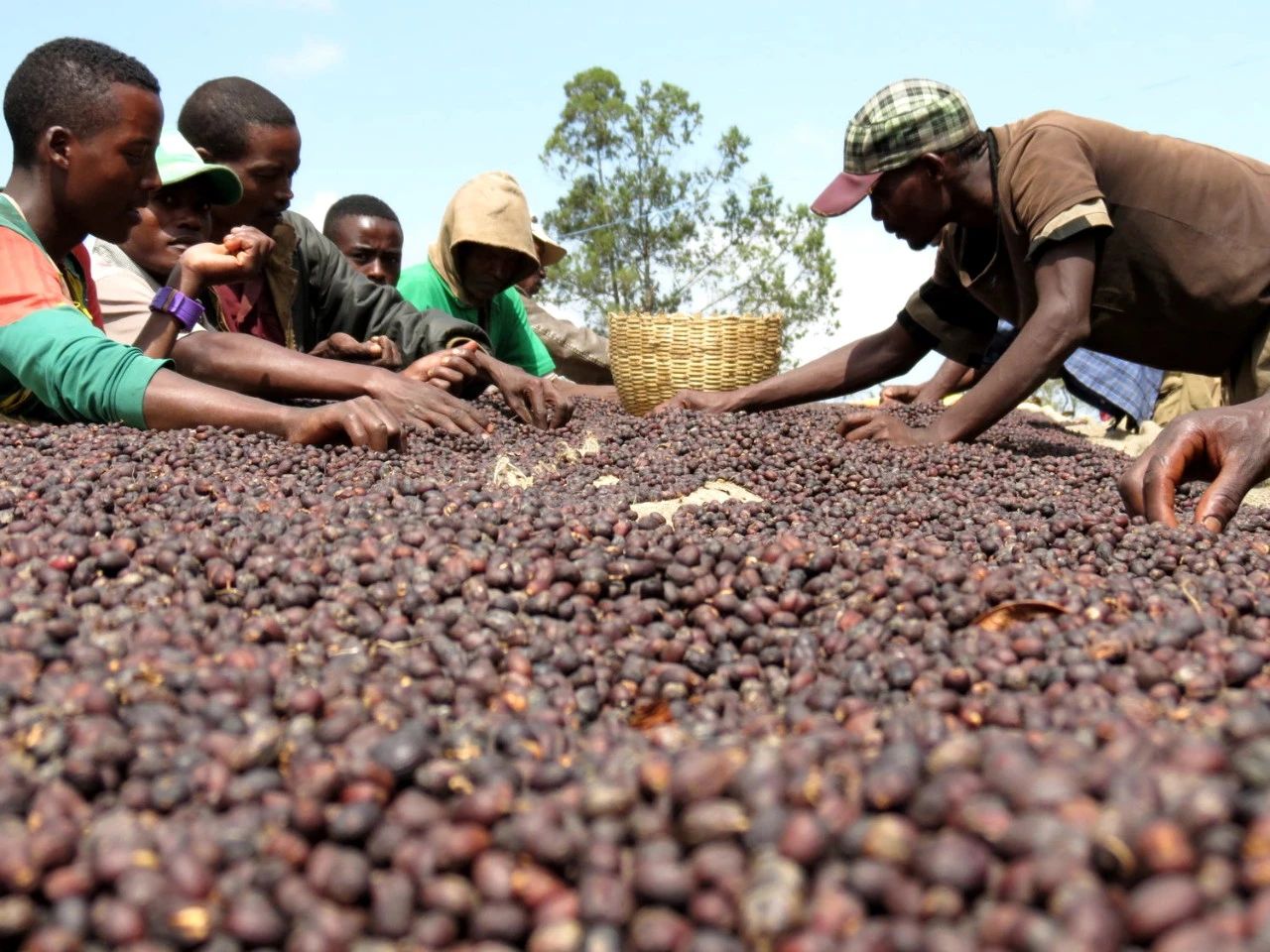
Country: Panama
Producing area: Walken (Johnson Manor)
Altitude: 1750 m
Variety: Rose summer
Treatment method: solarization treatment
Flavor: Maple syrup, lemon, citrus, apple, rose, dark chocolate, fruity, multi-layered sour and sweet
Jensen Rose Summer is rarely heard of in China. According to Qianjie, it is because Jensen Manor is mainly sold domestically and does not export. At this high altitude, nutrient-rich volcanic soil, abundant rainfall and suitable temperature, Jensen Manor has gradually become the second highest yield of rose summer among Panamanian estates, and 50% of the estates are planted with rose coffee trees. This estate not only has a dedicated processing plant to deal with its coffee cherries, but also makes great efforts in baking in order to improve the reference of cup test results.
These efforts have improved the quality of the coffee beans of Jensen Manor, which made it the runner-up in the BOP competition.
Panamanian Red label Rose Summer in the front street
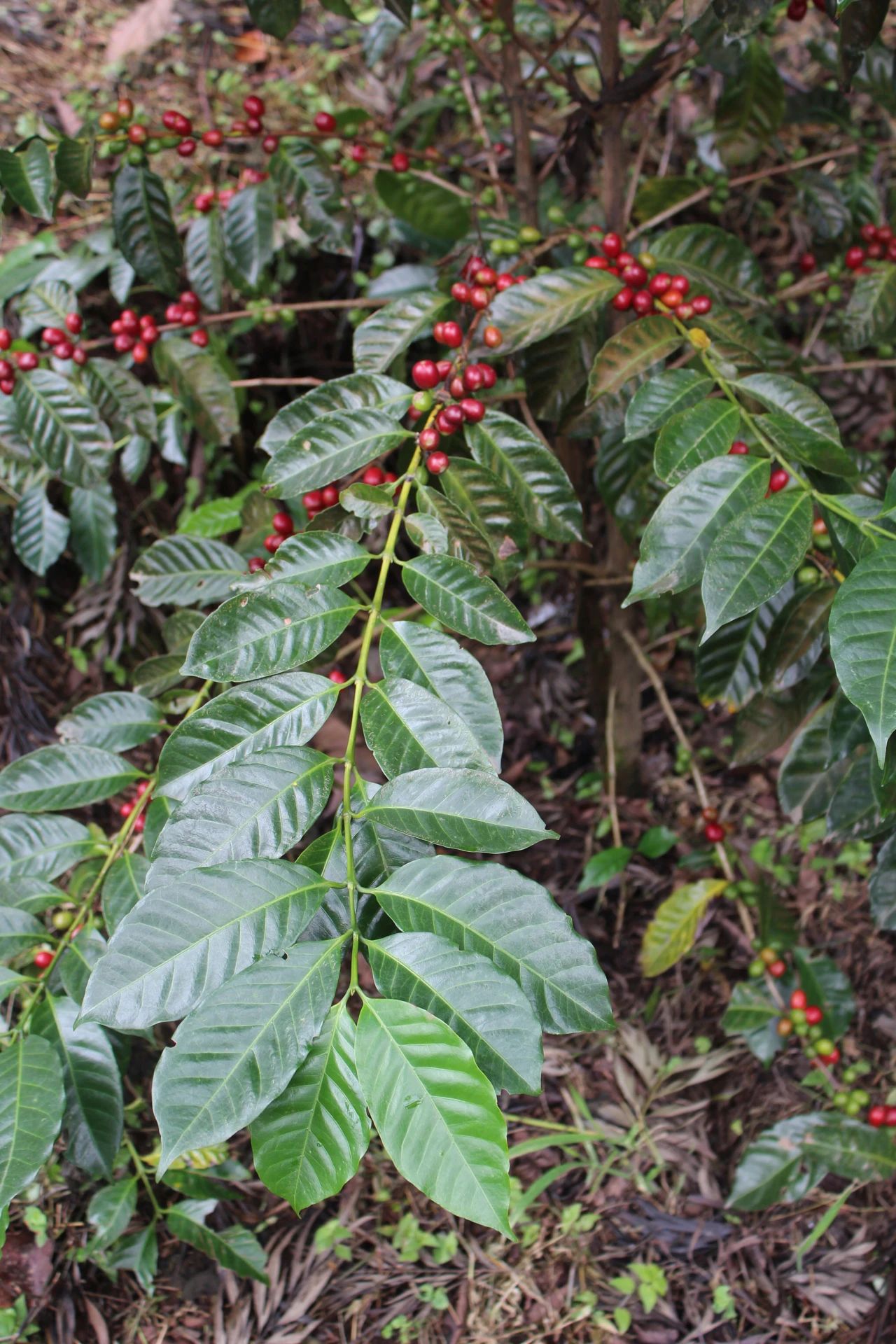
Country: Panama
Producing area: Pocket (Emerald Manor)
Altitude: 1700 m
Variety: Rose summer
Treatment: sun treatment
Flavor: rose, honeysuckle, sweet potato, grapefruit, lemon, black tea, sugar
The Jadeite Manor is located in the corner of the Baru volcano, so the coffee beans produced in this area are mostly named after Baru Mountain when they are not well-known. The surrounding area of Bouquete is scenic, with many leisure hotels, villa, resort estates, and even along the important river Rio Caldera. The Emerald Manor (La Esmeralda) is on the right side of the river in Jaramillo, and then grows coffee in the higher elevation area of Canas Verdes on the left side of the river. It's all thanks to Rudolph Peterson's decision to buy the industry.
The red sign we often hear is the rosy summer of jadeite specially selected products. The rose beans, which are planted at 1600-1800 meters above sea level and with a cup test score of more than 90 points, are produced in two producing areas of Haramiyo (Jaramillo) and Canas Vidis (Canas Verdes). It is the independent bidding held by the Jade Manor itself. In the divided plots, the Rose Summer lot that is put forward for bidding is the red bid. Guests often ask whether the competitive red bid is good to drink or the red bid is good to drink. In fact, the non-competitive red bid and the competitive red bid belong to the same plot. The difference lies in whether they participate in the bidding or not. Qianjie coffee thinks that it is not necessary to drink the bidding grade, first, the price is really high, and second, if you just want to try, the red mark is also a good choice.
Panamanian Green label Rose Summer in Front Street
Country: Panama
Producing area: Pocket (Emerald Manor)
Altitude: 1700 m
Variety: Rose summer
Treatment: sun treatment
Flavor: rose, honeysuckle, sweet potato, grapefruit, lemon, black tea, sugar
The green standard refers to the private collection, not the batch of independent competition, planting rose summer varieties that do not participate in the bidding but still have excellent quality. Micro-batch mixed beans from different plots such as Jaramillo and Canas Verdes were planted at 1600-1800 meters above sea level.
People often ask what is the difference between a red sign and a green one. Qianjie Coffee gives the most easy-to-understand answer, that is, which small plot can be traced back to the red mark, while the green mark is that the mixed beans are untraceable. Because the mode of mixed beans is adopted, it is not specified in detail on the plot, so sometimes the flavor of the green mark is very similar to that of the red mark, but the next product may be different. Qianjie coffee feels like buying a lottery ticket. Maybe the batch you drink this time is the taste of the red mark. Green roses will be treated by sun / water washing treatment.
In front of the street, Panama washes the blue label rose summer.
Country: Panama
Production area: Jaramillo, Canas Verdes, El Velo mixed beans
Altitude: 1400-1500 m
Breed: summer rose
Treatment method: washing treatment
Flavor: Citrus, lemon, honey, nutty, tea
Front Street Panama Sun Blue Label Summer Rose
Country: Panama
Producing area: mixed beans of Jaramillo, Canas Verdes, El Velo
Altitude: 1400-1500 m
Variety: Rose summer
Treatment: sun treatment
Flavor: lemon, honey, melon, berries, fermented feeling
Rose summer 1500 this brand is our common blue standard rose summer. Choose mixed beans from three different plots: Jaramillo, Canas Verdes and El Velo, which are 1400-1500 meters above sea level. Flavor micro-flower fragrance, fruit sour, sweet, taste is not thick, blue standard rose summer only washing treatment. In previous years, the blue standard rose summer was only treated with water, while the blue standard batch in the 2020 production season added a new way of sun treatment.
Front street, Panama, Alida.
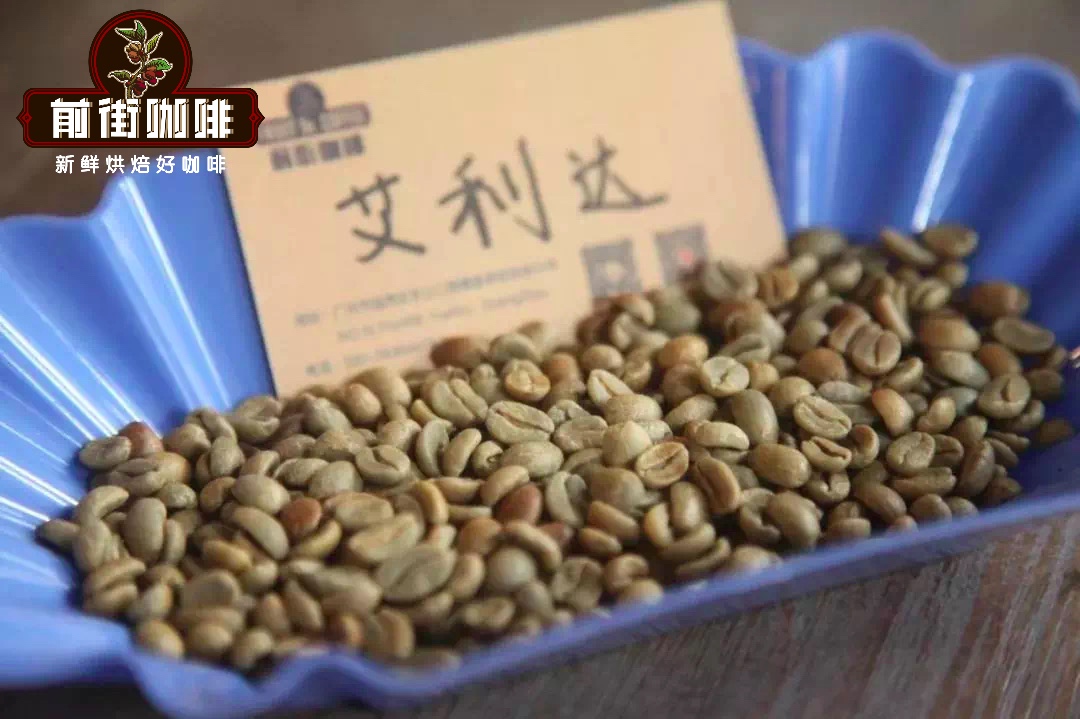
Country: Panama
Producing area: Pocket (Alida Manor)
Altitude: 1850m
Variety: iron pickup
Treatment: sun treatment
Flavor: raisins, peaches, oranges, melons, sucrose, caramel, green tea
As far as Qianjie knows, Erida Manor is the most famous estate of the Lamastus family. It was founded in 1918, and it has been a century since Robert Lamastus, the founder of the Lamastus family coffee farm, planted the first coffee tree. It has witnessed the popularity of fine coffee around the world.
Erida Manor has a total area of 65 hectares, more than half of which is within Baru Volcano National Park, only 30 hectares are used for planting coffee trees, and the rest are virgin forests.
Coffee is grown from 1670 meters to 1850 meters above sea level. at such a high altitude, the low temperature delays the ripening of coffee berries, about a month later than the normal ripening period; and the fertile volcanic soil provides sufficient nutrients for coffee, coupled with the good microclimate brought by the Baru volcano, Arida Manor is able to achieve good results in cup test competitions.
Front street Panama Hartman
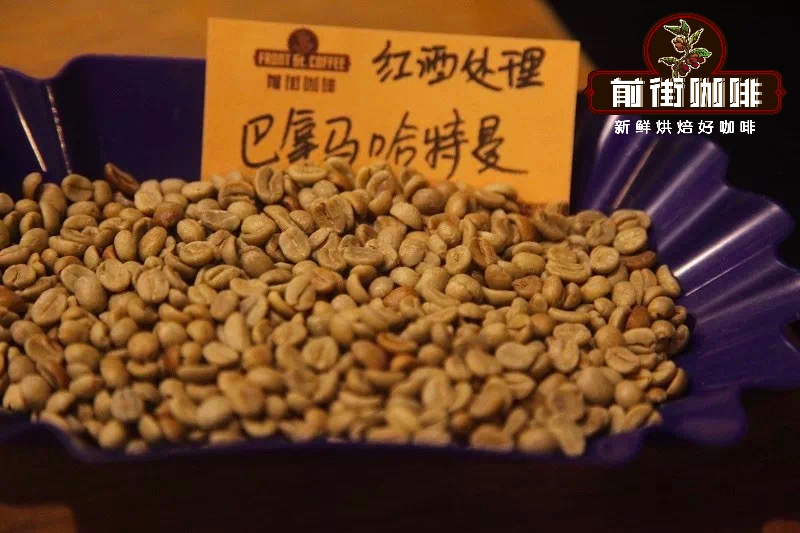
Country: Panama
Producing area: Walken
Altitude: 1250-1700m
Variety: Kaduai
Treatment: red wine treatment
Flavors: tropical fruits, nuts, red wine, honey, sugar
Hartman's story, like his coffee, is legendary.
Let's talk about the front street coffee. Hartman Manor is located in Chilidge, Santa Clara. The founder is called Mr.Alois St. Hartmann (Luis Hartmann). He was born on June 20, 1891 in the Moravilla region of Austria and Hungary in what is now the Czech Republic, and died on May 25, 1970 at the age of 78. After the beginning of World War I, he was abandoned as a little boy. Thanks to his mother, he was able to hide in a ship bound for Pennsylvania and survived.
Both of his brothers died in the war after joining the army. Luis Hartmann and his friends traveled to some countries until he came to Panama in 1911 and settled in Chiriki province in 1912, mainly in the Kendra region. He built his first cabin in the primeval forest. Today's Hartman Manor is a family business founded by Latip Hartman (son of Eloise) in 1940.
In 1966 Latip married Dinola Sandy of Costa Rica. They have five sons, Latipa Jr., Alan, Alexander, Alice and Kelly. Each family member is responsible for the growth management, harvesting and handling of the coffee and the visit to the manor. The family business has a state cup testing laboratory and a sample baking room. Test each batch of coffee fruit with a rigorous attitude and strict standard cups. This ensures that the coffee quality at Hartman Manor is stable and is always looking for progress. Their scientific attitude towards coffee and nearly 100 years of family experience ensure that they produce excellent products, and a family farm that has grown coffee for more than 100 years is itself a legend.
Panamanian Flower Butterfly in Front Street
Country: Panama
Producing area: Pokuit
Altitude: 1600 m
Variety: Kaduai Kaddura Rose Summer
Treatment method: washing treatment method
Flavor: citrus, floral, tea, honey
Panamanian Flower Butterfly Coffee beans have a 40% Rose 50% Rose Summer pedigree, which is composed of Rosa geisha, Kaddura Caturra and Kaduai Catuai. They are planted in the Baru volcano area of Pokuit and grow in the volcanic area at an altitude of 1600 meters. The treatment plant uses fine washing treatment. The special local microclimate of Panama leads to abundant rainfall in this area and a large temperature difference between day and night. Coupled with the unique volcanic soil in the volcanic area, as well as meticulous harvesting and fine treatment, this coffee performs well in terms of richness, acidity and floral aroma.
What is even more surprising in Qianjie is that on the basis of very excellent quality, the price of this coffee bean is very close to the people, which makes this coffee bean cost-effective.
Some people may ask whether the flower butterfly is a mixed bean. Qianjie can tell you that the three species in the flower butterfly are all from the same place and the same producing area, so it belongs to a single bean.
5. Costa Rica
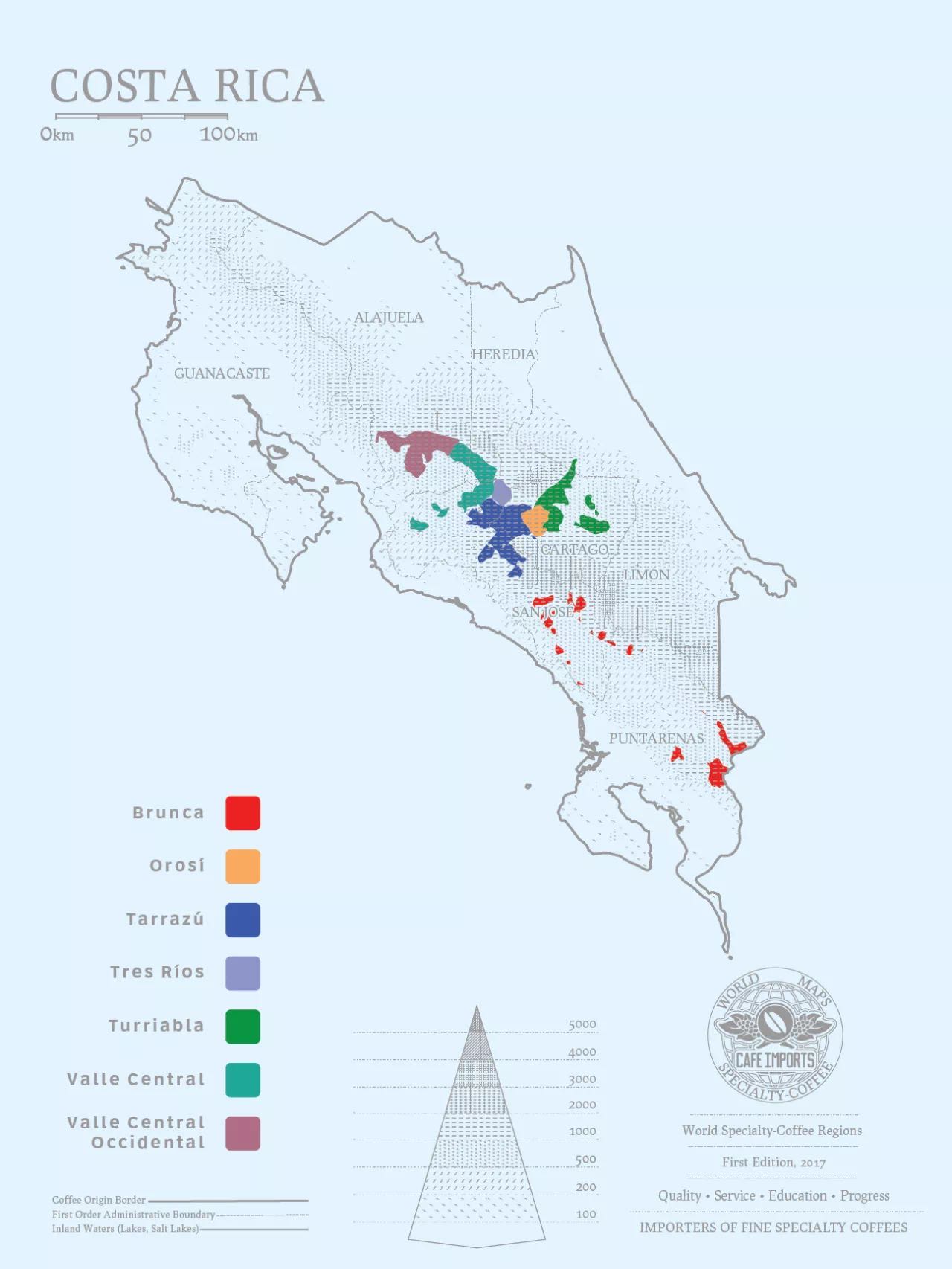
Coffee is an important source of income for Costa Rica, introduced in 1808 and cultivated for 200 years. Costa Rica has a third of the population invested in coffee-related industries, Costa Ricans say coffee has changed the country, can enjoy a rich environment, coffee indeed contributed excellent. Although Costa Rica's land area ranked third from the bottom of the Central American narrow, but the economic environment is better than half of the countries, but also because of the rich people, social stability, but also have the spare time to care about environmental issues, Costa Rica has more than 30 national parks.
Coffee was introduced to Costa Rica from Cuba in 1729, and today its coffee industry is one of the most well-organized in the world, producing up to 1700 kilograms per hectare. Costa Rica has a population of 3.5 million, but coffee trees number 400 million, and coffee exports account for 25% of the country's total exports. Costa Rica's volcanic soils are fertile and well drained, especially in the Central Plateau, where the soil consists of successive layers of ash and dust. Costa Rica was thus the first country in Central America to grow coffee for commercial value. Coffee is the country's chief export.
Costa Rica is located in Central America. It is the first country to introduce coffee into Central America. It has a long history and a complete coffee organization system from production to sales.
Because it is located in the Central American Isthmus, the volcanic soil is very fertile and well drained, especially in the Central Plateau, where coffee is grown in fertile volcanic ash, mild and suitable temperatures, and stable and abundant rainfall. Coffee has become one of the main agricultural products.
Altitude 1,200-1,600 meters, production season November to March, this region has three sub-regions, they are San Jose, Heredia, Alajuela.
Front Street also learned that there are three high-altitude volcanoes in the region: Irazu, Barva and Poas, which provide rich nutrients for the surrounding coffee producing areas. The microclimate, combined with the fertile soil of Poás and Barva volcanoes, gives the beans of this region excellent qualities, such as chocolate cocoa flavor, bright acidity and elegant aroma.
Front Street Costa Rica Black Soul

Country: Costa Rica Fiscal year: 2003
Region: Central Valley (Las Lajas Estate)
Altitude: 1300-1500 m
Breeds: Kadura, Kaduai
Treatment method: sun treatment
Flavor: Fermented fruity, floral, citrus, plum, fruit tea.
The Central Valley region is the first coffee growing area in Costa Rica, and then to other areas to develop the country's coffee industry, moderate rainfall, annual average temperature of 19 ° C, coupled with high altitude, the front street feels that the beans are hard and fragrant, smooth, high acidity, full beans, rich aroma, and Central Valley coffee is Costa Rica's earliest coffee growing area, rich in volcanic soil, so the flavor has chocolate flavor.
Las Lajas Estate is currently run by Francisca Cubillo, the third generation owner, and his wife Oscar. The estate is located in the Central Valley not far from the capital. It is quite close to Poas Volcano volcano. The altitude is between 1,250 and 1,500 meters. The annual output is about 55,200 kg.
Front Street Costa Rica Mozart
Country: Costa Rica
Producing area: Tarazhu
Altitude: 1800m
Variety: Kaddura, Kaduai
Treatment method: raisin anaerobic honey treatment
Flavor: raisin sour berry blossom, fermented wine
This is Mozart from the Quadrilogy of the famous musicians of Carnett Manor.
The origin of the musician series is that the owner of Carnett Manor loves classical music, so the coffee beans produced by the manor are named after musicians. Carnet Manor is located at the highest altitude where Tarrazu coffee is grown in Costa Rica. The estate uses Kaddura and Kaduai coffee beans to do raisin honey treatment and water washing to produce a series of world-famous musicians' coffee beans, named "Beethoven", "Bach", "Chopin" and "Mozart". They are all SHB grade high-altitude hard beans with sweet flavor, fruit aroma, wine aroma and strong tea aroma.
Classical music collection of its successful child prodigy Mozart, gorgeous! Gorgeous fragrance: exudes elegant floral fragrance, white flower aroma like orange blossom, which Qianjie thinks can also be felt during cooking. Gorgeous palate: more dark berries, raisins and traces of red berries, with slightly sour plums and sweet bear fudge in the middle and back. After cooling down, it still retains the fragrance and sweetness of the flowers. Unlike in the past, Mozart coffee beans, which used yellow Kaduai varieties treated with red honey, are famous for their unrestrained floral fragrance, this time using the sweetness of Kaddura and Kaduai as the representative of Mozart.
Front Street, Baja, Costa Rica.
Country: Costa Rica Fiscal year: 2003
Production area: Tara Pearl
Altitude: 1950m
Breed: Cadura
Treatment: Raisin honey treatment
Flavor: Fermented berry fruity tea
This is Bach from the famous musician series "Quartet" of Kanet Manor.
Bach's music is refined, layered, and clear. The coffee beans named Baha, the front street thinks that dry fragrance with strawberries, blackberries, raisins and other fruity aroma, brewing when also floating bursts of fruit. When it was just cooked, the fragrance of flowers and fruits was obvious. After entering the mouth, he also felt the rich fruit aroma and sour taste. The middle and rear sections had a slight wine fragrance, just like red wine. After cooling down with candied fruit sweet fragrance, but the wine fragrance is more obvious, even can feel the plum wine flavor. Every bite seems to be in the grandeur and rigour of Baroque aesthetics.
Front Street Costa Rica Beethoven
Country: Costa Rica
Producing area: Tarazhu
Altitude: 1800-1950 m
Variety: Kaddura, Kaduai
Treatment: washing treatment
Flavor: light fermented wine with citrus and berry floral aromas
This is Beethoven in the Quadrilogy of the famous musicians of Carnett Manor.
Nothing is more famous for romantic classical music than Beethoven. Qianjie believes that coffee beans that will be associated with Beethoven music will naturally have their flavor, and the dry aroma will have obvious red berries, of which strawberries are the most obvious and send out the fragrance of flowers. When cooking, you can feel the fragrance of flowers, nectar-like sweetness and green grapes. After the entrance of Beethoven coffee, there is a sweet and sour taste of green grapes and red berries, the whole is clean and smooth. The red berries will be more obvious when they are cold. There is even a foreign coffee blog said that this is a summer romantic coffee.
Front Street Milasu Manor, Costa Rica
Country: Costa Rica
Producing area: Tarazhu
Altitude: 1700 m
Variety: Rose summer
Treatment method: solarization treatment
Flavor: strawberry, peach, cinnamon, jasmine
Milasu owner Esteban Sanches, who graduated from the caffeine department of the Agricultural University of Costa Rica, is a very fussy person. His friends jokingly call his estate a scientist's manor, and he becomes a coffee farmer called a "scientist". Esteban Sanches likes to look at coffee cultivation from a scientific point of view, constantly learning to adjust in the process of practice, as small as the orientation of coffee seedlings, the spacing of each row, and the sequence of fertilization, he will arrange everything in great detail.
Qianjie learned that the manor owner Sanches was originally a member of the family of Candle Manor. Because of his insistence on coffee beans, he set up a manor Mirazu on his own. And the manor machine from design to assembly is done by Sanches himself, after his modification of the machine function is particularly powerful. What he is most proud of is that he can use 100 liters of water to deal with all the coffee beans and better protect the water resources. Sanches's roaster and sheller are also designed by himself, and his sheller is different from the general one in that it can handle two different kinds of beans at a time. Because he devoted his time and energy to the study of machines and coffee, nearby farmers called him Dr. Machine and a bean expert. Qianjie also thinks that the title is well deserved.
Front street Costa Rica fire Phoenix sapphire
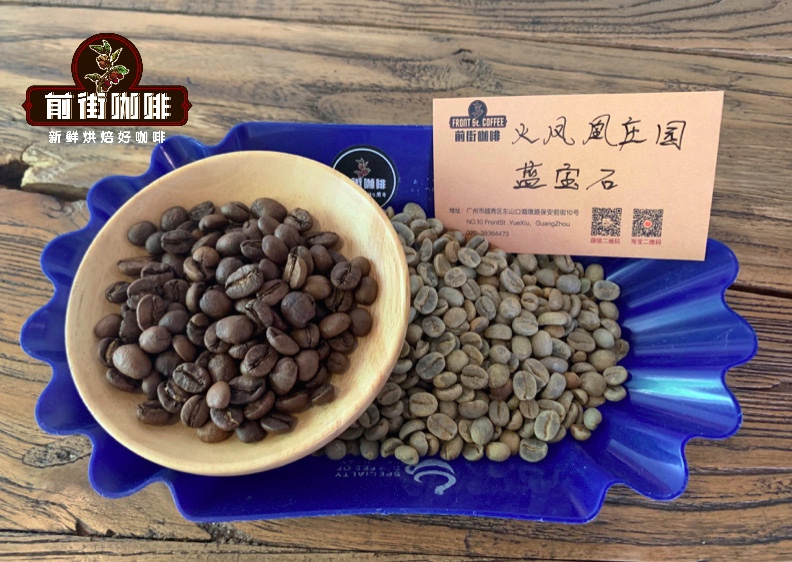
Country: Costa Rica
Producing area: central Canyon (Fire Phoenix Manor)
Altitude: 1300-1500m
Variety: Kaddura, Kaduai
Treatment: sun treatment
Flavor: strawberry, tropical fruit, mint, honey, cocoa, fermented fragrance
Fire Phoenix Manor is located in the coffee producing area of the Central Valley, which is the first area in Costa Rica to grow coffee. Moderate rainfall, an average annual temperature of only 19 ℃, coupled with high altitude, so the bean hard aroma, smooth, high acidity, full-bodied, rich flavor. Located in the hills of the Poas volcano in the central valley, Fenghuang Manor is an early coffee plantation in Central and South America for honey treatment and sun-drying coffee.
Qianjie Coffee also learned that Fenghuang Manor was the first producer of honey-treated and sun-cured coffee in Central and South America. It is a completely 100% organically grown coffee farm. The owner believes that organic farming is a better choice for environmental maintenance and family health, so he still adheres to this belief even in the face of many technical and organizational challenges. The high-quality coffee produced by this manor is very unique, and the biggest feature is its amazing sweetness! He became famous when he took part in the boutique coffee contest in 2009. During the harvest season, the wine industry is often surprisingly sweet!
Qianjie Costa Rica Lumi Sultan
Country: Costa Rica
Producing area: Lumei Valley
Altitude: 1250-1380m
Variety: Lumei Sultan
Treatment: washing treatment
Flavor: citrus, berries, oolong tea, sugar
Rume Sudan was discovered in the Rume Valley Valley of the Boma Plateau Plateau near the Ethiopian border in southeastern South Sudan in 1940. Code name RS-510, known to the coffee industry, is basically a wild coffee variety, native to tropical African forests in the Marsabit Mountains, characterized by brass leaves.
Until 2015, the bean of Lumi Sudan received attention as the participating bean of the WBC champion Sasa.
The coffee variety of Lumi Sudan rarely appears in the eyes of the public. although it has strong disease resistance, due to its low yield, it is rarely planted on a large scale and is basically used for variety research and development. to increase the taste of coffee and improve disease resistance.
At the same time, Qianjie also learned that Lumei Sultan is also known to the coffee industry by the code name RS-510, with brass leaves as its main features. When breeders need to create new varieties of coffee, RS-510 is the best Arabica provenance. For example, varieties with high yield and poor flavor can usually get varieties with good flavor and good yield when mixed with RS-510, because the flavor of RS-510 is extremely amazing, but the disease resistance is common and the yield is very low.
So in the end, RS-510 is mixed with higher-yielding varieties, so that coffee farmers can have new hybrids with high yield, strong disease resistance, and drinkable. Many well-known modern varieties, such as Castillo, Centroamericano, or Colombia, have been developed using this technique.
Costa Rican Candle Manor in front of the street in summer

Country: Costa Rica Fiscal year: 2003
Production area: Candle Manor
Altitude: 1750 m
Breed: summer rose
Treatment method: washing treatment
Flavors: lemon, jasmine, honey, green tea
Front Street learned that Candle Manor is Costa Rica's CoE's award-winning estate. Costa Rica rose summer coffee beans are relatively young in the estate, but also because of different soil and microclimate, produce different Costa Rica rose summer coffee flavor, but also delicate. Rich in acidity, long in endings. Aromas of almond, plum, citrus, sweet flowers and berries are evident. La Candelilla, translated as "little candle," is named after the fireflies that light up nearby streams on summer nights.
La Candelilla, known for its abundance of fireflies, is a collection of nine small farms owned and operated by nine Sanchez siblings and their families. They work together on all aspects of production and combine their personal gains, run by Hugo and his daughter Marcia-which they built together in 2000, allowing them to better control quality, efficiency and costs. Our La Candelilla product is a mixture of Caturra and Catuai varieties from all nine farms.
Front Street Costa Rica Tarazhu
Country: Costa Rica
Producing area: Tarazhu
Altitude: 1950m
Variety: Kaddura
Treatment: washing
Flavor: orange, nut, honey
Tarazhu is very famous in the world of boutique coffee and is one of the major coffee producing areas in the world. In the 2014 COE competition, of the 23 beans on the list, 17 came from Tarazhu producing areas. Tarazhu is located in the fertile volcanic region of Central America, which has a humid climate and fertile volcanic soil, abundant rainfall throughout the year, high altitude, and dense forest natural shade, providing a unique growth environment for coffee growth. Pesticides or artificial fertilizers are not used in the planting process. Nearly 95% of the coffee beans produced in Tarazhu Alpine are very hard beans (SHB), which generally grow above 1500 meters above sea level.
7. Honduras
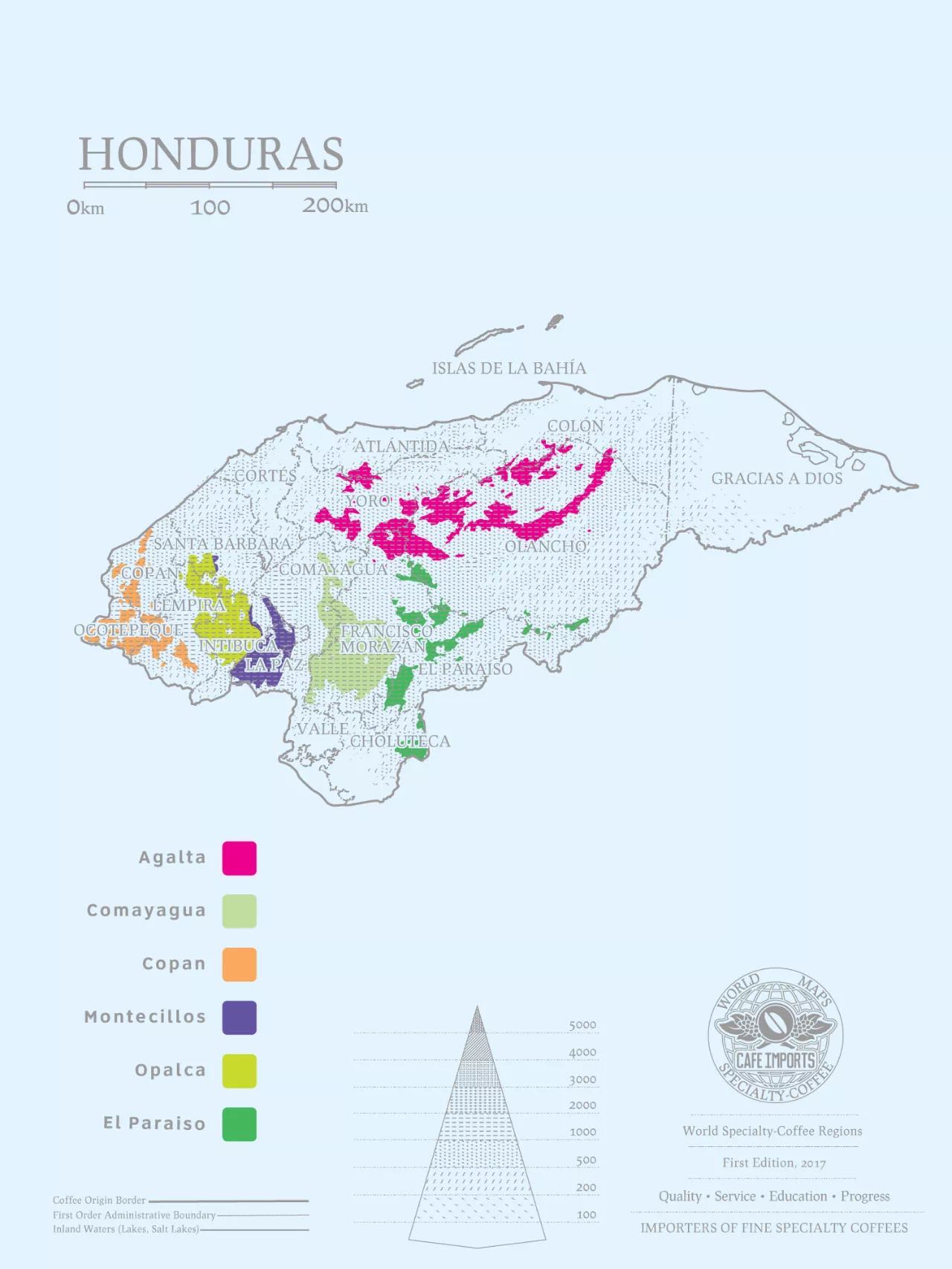
Honduran coffee can be divided into six major producing areas, mainly located in the west and south of the Coban region (Copan), Obalaka region Opalaca), Mondesius (Montecillos), Gongma Agua (Comayagua), Agalta Tropical (Agalta Tropical), Parasso (El Paraiso). Among them, there are three major producing areas:
Montecius: the highest altitude producing area in Honduras, the coffee is bright and layered, full of rich fruit and sweet aromas, with citrus aromas.
Koban area: coffee beans in this area have chocolate flavor, mellow taste and high sweetness.
Akata: the coffee beans in this area have a sense of honey sweetness and acidity balance, and have chocolate tonality.
However, the recent hot sherry coffee beans and lychee orchid coffee beans are not from the above six producing areas, but from Masaguara, a city in Intibu á province in southwestern Honduras.
The coffee industry in Honduras has developed quite late, far less than most of the countries around Central America. With the full support of the government and drawing lessons from the development model of Brazil, the coffee industry in Honduras has gradually developed. In particular, in 2010, the involvement of Japanese boutique coffee made Honduras have the potential to become a superstar. Since 2011, Honduras has surpassed Guatemala in coffee production to become the largest coffee producer in Central America and one of the top 10 coffee producers in the world. So Qianjie believes that Honduran coffee has unlimited potential!
Here are some coffee beans from Honduras on the front street.
Front Street Honduras Sweet Orange Manor
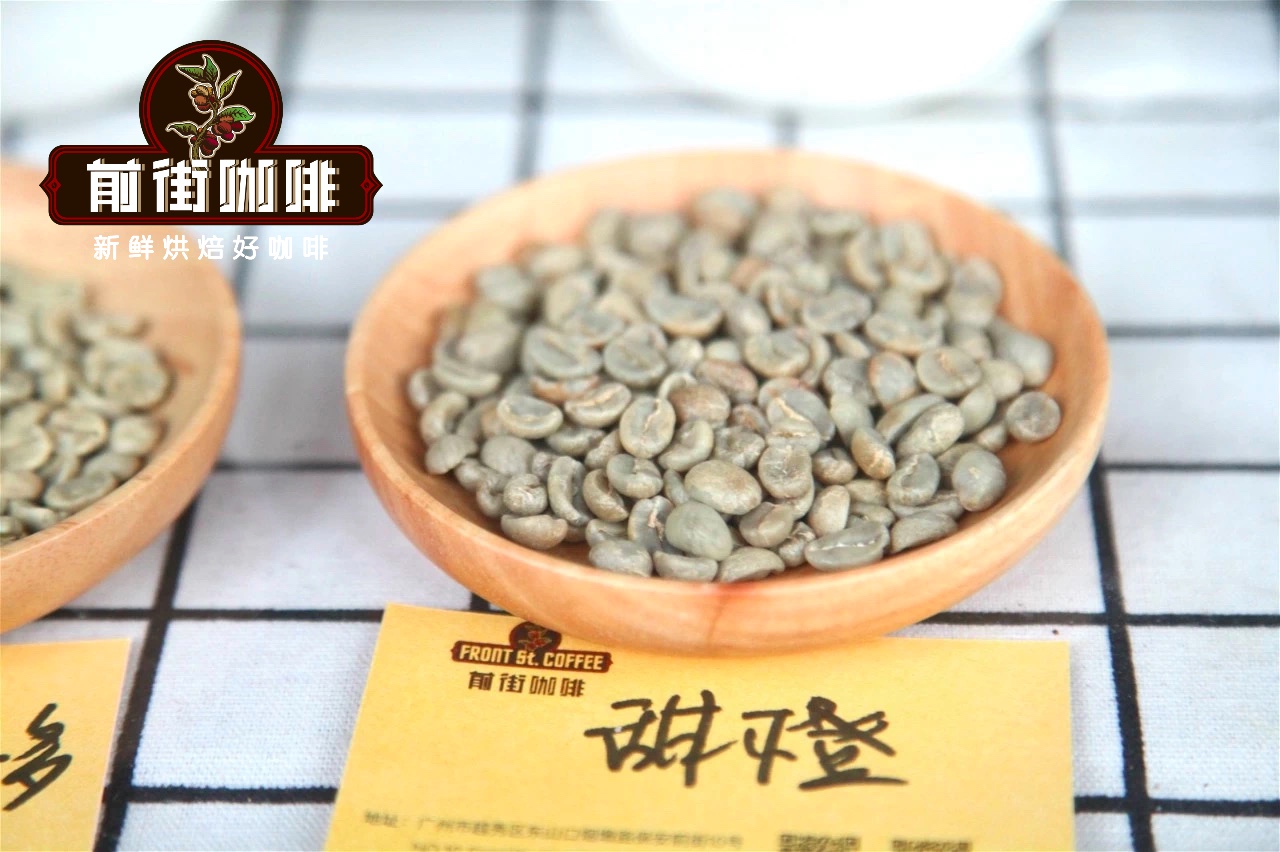
Country: Honduras
Producing area: Makala
Altitude: 1425m
Variety: Kaduai
Treatment: washing treatment
Flavor: citrus, cantaloupe, flower, sucrose, orange peel, nuts, tea
The front street learned that the Sweet Orange Manor (El Naranjo) is located in Marcala and belongs to the La Paz producing area, which produces coffee on a par with Santa Barbara, another producing area in Honduras.
The manor is named after the shade tree, which is a tall wild orange tree.
Honduras litchi orchid in front street
Country: Honduras
Producing area: Masaguara
Altitude: 1500-1700m
Variety: Kaddura, Kaduai
Treatment method: barrel fermentation method
Flavor: cream, dark chocolate, honey, litchi, brandy
The front street coffee lychee orchid coffee beans have a strong wine aroma, the latter section shows a solid chocolate flavor, impressive. In recent years, many treatment plants have launched a variety of innovative treatment methods, the early 90 + treatment is still a new time, now anaerobic treatment, red wine treatment, and now oak barrel treatment, it can be said that more and more new treatments have also enriched the flavor of beans. In this delicate brandy barrel fermented litchi orchid, the freshly picked coffee fruits are first delicately washed, then fermented at low temperature in brandy oak barrels for 30-40 days (the temperature is about 15-20 ℃) to make the coffee beans absorb the flavor of the barrel, and finally dry in the shade. After brandy barrel fermentation, the beans have soft lychee and honey aromas, combined with alcoholic brandy and oak aromas.
Front street, Honduras Shirley.
Country: Honduras
Producing area: Masaguara
Altitude: 1500-1700m
Variety: Kaddura, Kaduai, Pacas
Treatment method: barrel fermentation method
Flavor: vanilla, cream, whisky, berries, dark chocolate, maple syrup
Shirley Coffee is located in Masaguara, a city in Intibu á province in southwestern Honduras, where this alcoholic-flavored coffee is produced.
Honduras Shirley Coffee has become one of the more distinctive bean lists in Qianjie because of the small number of raw beans and the use of fermentation treatment, which is more popular in recent years.
Honduran sherry coffee beans are planted at an altitude of 1500-1700 meters. After the single mixed varieties of sherry coffee in Qianjie, Kaddura, Kaduai and Pacas, are fermented and roasted in a delicate washing whisky barrel, Qianjie draws a conclusion during the experiment: the flavor of Honduran Shirley is characterized by whisky, berries, almonds and dark chocolate, and the aftertaste is sweet with maple syrup. After cooking, it smells of vanilla and cream.
Shirley buckets are used by the Sherry winery in the whisky industry to make aged buckets. Sherry goes through the ripening process of Solera system Solera System in the process of making sherry. This process refers to the process of mixing and aging different vintages of sherry after strengthening, which is also the unique feature of the formation of sherry flavor.
The coffee beans fermented in Shirley buckets naturally have the flavor of sherry, forming an intoxicating and unique taste, which has been very popular in recent years.
7. Jamaica
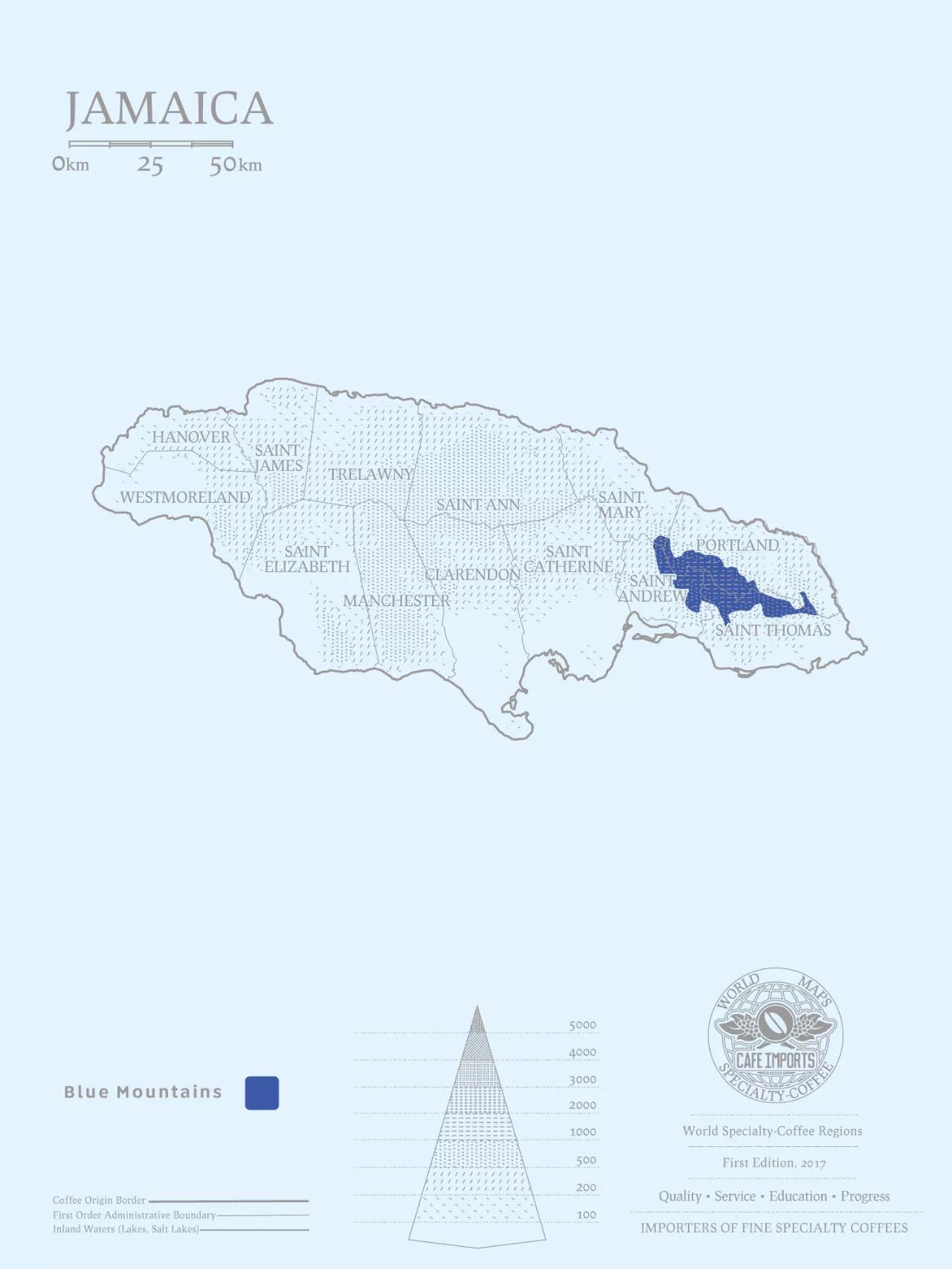
Jamaica is an island in the Caribbean. Jamaica's Blue Mountains are the highest in the Western Caribbean (2256m above sea level, only below 1700m can stop coffee, above is a protected forest). Blue Mountain is located in the coffee belt of 25 degrees north latitude, with fertile volcanic soil, fresh air, year-round rain, high humidity, large temperature difference between day and night, regular rainfall and under the hazy clouds on the island, keep the coffee trees away from the hot sun.
Jamaica Blue Mountain coffee beans are mainly washed with water. This is to ensure the standard flavor of Blue Mountain Coffee, but this year we all have some luck. The sun version of Blue Mountain Coffee has been successfully produced. The sun treatment of Blue Mountain Coffee can be said to be an unprecedented innovative attempt, and the R & D team has also gone through thousands of experiences. Not only can it be exported without washing raw beans with the permission of the Ministry of Agriculture of Jamaica, but also to inspect and learn from the experience of excellent manors many times to adjust the treatment plan.
The following is an introduction to the Jamaican Blue Mountain Coffee on the front street.
The front street washes the blue mountains.
Country: Jamaica
Producing area: blue Mountain
Altitude: 1310m
Variety: iron pickup
Treatment: washing
Flavor: dark chocolate, nuts, cream
The Jamaican Blue Mountain of Front Street Coffee comes from Clifton Manor. Clifton is by far the oldest coffee producer in Jamaica, and only Clifton Farm in Jamaica has the "tropical rain forest" logo.
Until 19 years ago, Blue Mountain Coffee at Clifton Farm had been washing raw coffee beans. During the treatment, first remove the peel and pulp and let it ferment for 18 hours, then put the fermented beans into the pool and pass them back and forth, using the friction of the beans and the power of running water to wash the coffee beans until smooth and clean. After washing, at this time, the coffee beans are still wrapped in the pericarp with a moisture content of 50%. They must be dried to reduce the moisture content to 12-14%, otherwise they will continue to be mellow, moldy and rotten.
After that, the coffee beans are screened and stored in a special warehouse.
The washing method also ensures that Blue Mountain Coffee has a rich aroma and a balanced taste, without any outstanding or lacking essence.
Qianjie Sunshine Blue Mountain
Country: Jamaica
Producing area: blue Mountain
Altitude: 1310m
Variety: iron pickup
Treatment: insolation
Flavor: berries, black cocoa, cream, nuts, brown sugar
Under the influence of the market, Blue Mountain Coffee conducted a tanning experiment in 2019 and began to export small batches of Blue Mountain for the first time in 2020.
For Qianjie, this kind of sun-dried Blue Mountain coffee changes the inherent flavor structure of Blue Mountain because of its change of treatment. Every time Qianjie Coffee introduces coffee beans in a certain producing area to guests, it will first recommend washed coffee beans. It is because washing can best represent the flavor of the producing area.
Of course, Blue Mountain Coffee uses sun treatment, more or follow the development of the market.
The above are all the Latin American coffee beans in Qianjie. I believe coffee fans also have a certain understanding of Latin American coffee.
For more boutique coffee beans, please add private Qianjie coffee on Wechat. WeChat account: kaixinguoguo0925
Important Notice :
前街咖啡 FrontStreet Coffee has moved to new addredd:
FrontStreet Coffee Address: 315,Donghua East Road,GuangZhou
Tel:020 38364473
- Prev
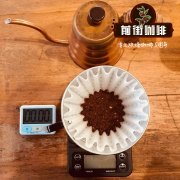
Latin American coffee flavor characteristics of Latin American coffee beans to drink how much money a packet?
Professional coffee knowledge exchange More coffee bean information Please pay attention to coffee workshop (Weixin Official Accounts cafe_style) Latin American coffee bean flavor characteristics Introduction Taste characteristics: balanced, moderate acidity and mellow Central and South American bean flavor: Overall, the flavor is quite satisfactory. Brazilian coffee is soft and sweet, Costa Rican coffee is mild and soft, sour, sweet and smart
- Next

Latin American coffee brand recommendation on how to brew Latin American coffee beans
Professional coffee knowledge exchange more coffee bean information please follow the coffee workshop (Wechat official account cafe_style) Latin American coffee bean taste characteristics: balanced, moderately sour and mellow Central and South America is the world's largest coffee producing region, where there are numerous boutique coffees. If you take Colombia, Guatemala or Brazil as an example, good coffee is enough to make people dazzle.
Related
- Does Rose Summer choose Blue, Green or Red? Detailed explanation of Rose Summer Coffee plots and Classification in Panamanian Jade Manor
- What is the difference between the origin, producing area, processing plant, cooperative and manor of coffee beans?
- How fine does the espresso powder fit? how to grind the espresso?
- Sca coffee roasting degree color card coffee roasting degree 8 roasting color values what do you mean?
- The practice of lattes: how to make lattes at home
- Introduction to Indonesian Fine Coffee beans-- Java Coffee producing area of Indonesian Arabica Coffee
- How much will the flavor of light and medium roasted rose summer be expressed? What baking level is rose summer suitable for?
- Introduction to the characteristics of washing, sun-drying or wet-planing coffee commonly used in Mantenin, Indonesia
- Price characteristics of Arabica Coffee Bean Starbucks introduction to Manning Coffee Bean Taste producing area Variety Manor
- What is the authentic Yega flavor? What are the flavor characteristics of the really excellent Yejasuffi coffee beans?

